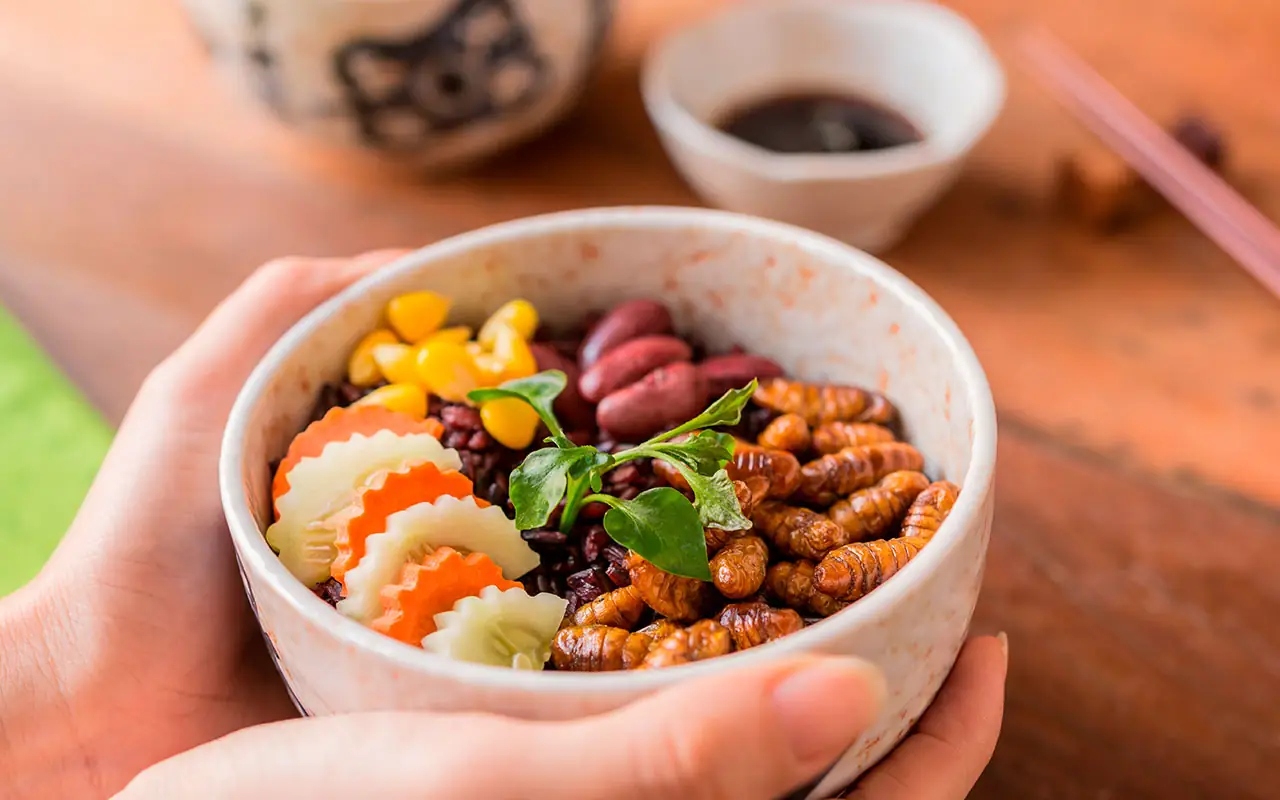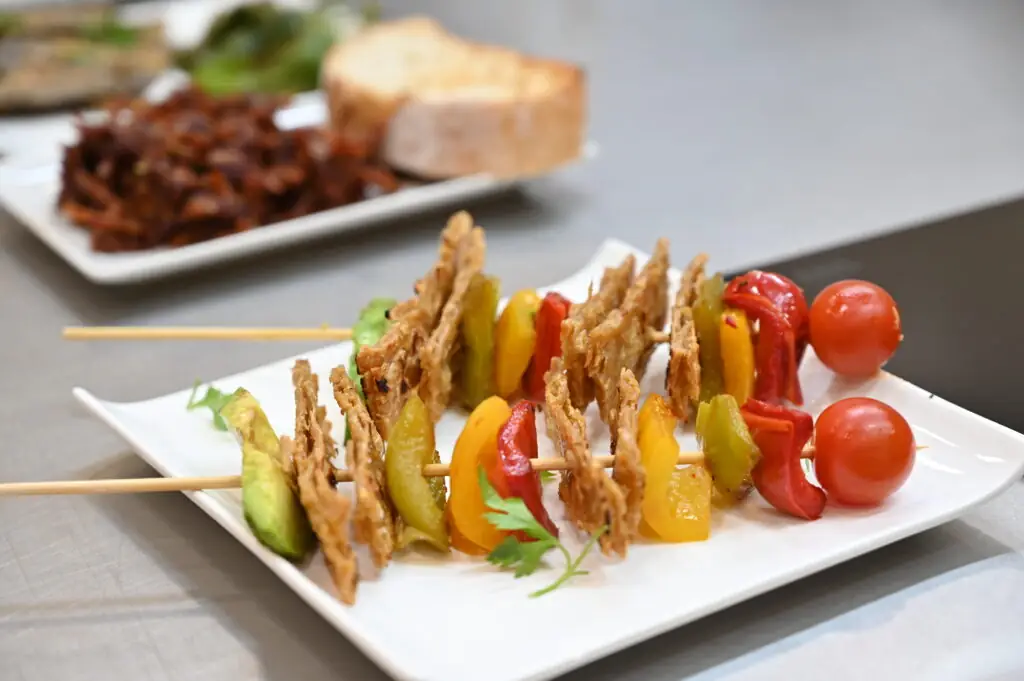The role of insects as an alternative protein source is gaining increasing relevance due to their potential to transform global food systems. With their low environmental footprint and high nutritional value, insects are positioned as a key component in the search for sustainable protein solutions. At AINIA, we developed various projects that explore innovative and environmentally friendly ways to produce alternative proteins.
By 2050, the global population is expected to increase by 30%, reaching 10 billion people. This growth poses a major challenge for sustainable food production. Additionally, the demand for animal-based protein is projected to rise by 52% compared to 2019 levels. Maintaining the current food production model is no longer viable due to its significant impact on water use, land availability, and carbon emissions.
Alternative Proteins: Moving Towards Sustainability
The environmental impact of insect protein is significantly lower than that of traditional animal protein. Insects require less water and land, and generate fewer CO₂ emissions. This favorable context supports the rise of flexitarian diets, where consumers reduce meat and fish intake in search of healthier, more sustainable alternatives. These alternatives include legumes, seeds, insects, microalgae, fungi, and duckweed, among others. As insects as an alternative protein source gain visibility, they are becoming essential to more sustainable food systems.
Criteria for the Industrial Production of Insects as an Alternative Protein Source
For these new protein sources to be industrially viable, they must meet strict criteria in terms of cost, production volume, proximity, protein quality, and digestibility. At AINIA, we address every stage of the process, from the identification and selection of novel sources to processing, adaptation, and final product development. Below, we highlight some of the projects we’re working on in this field.
Technologies to Enhance Protein Ingredient Quality: Supercritical CO₂ Extraction
Among the technologies with growing relevance in this context is supercritical CO₂ extraction, which offers a clean, solvent-free approach to defatting and concentrating nutrients from a wide range of biological matrices.
We have been intensively developing this technology for several years, particularly in the context of biorefinery strategies aimed at valorizing plant-based materials. The same technological principles can now be applied to emerging protein sources, including insects as an alternative protein source, to enhance the nutritional and functional value of the resulting ingredients. Supercritical CO₂ extraction allows for precise separation of lipids and proteins, improving purity while preserving bioactivity. This makes it an ideal complement to innovative processing routes that aim to deliver high-performance, sustainable ingredients for food applications.
PROXIMED: New Sustainable Sources of Alternative Proteins for Human and Animal Nutrition Using Green and Innovative Technologies
This European project aims to introduce new sustainable sources of alternative proteins in the Mediterranean region, for both human and animal consumption, using green and innovative technologies. Within the scope of insects, we focus on formulating specific diets for insect rearing and on developing a stabilization process that includes drying and defatting to obtain a high-quality protein ingredient. This is then processed through both high-moisture extrusion (HMEC) and low-moisture texturization (TVP) to produce meat analogues based on insect protein. We collaborate with ProteInsecta and the German Institute of Food Technology.
Species Selection and Processing: Tenebrio molitor, Hermetia illucens, Acheta domesticus and Locusta migratoria
The selected species: Tenebrio molitor, Hermetia illucens, Acheta domesticus, and Locusta migratoria were chosen based on nutritional parameters and conversion ratios. We design feeding substrates using agro-industrial by-products such as citrus pulp, duckweed, and hemp, which influence the insects’ nutritional profile. The stabilization process includes blanching, drying, milling, and supercritical fluid defatting, followed by dry fractionation to obtain a protein-rich ingredient.
Assessing Digestibility and Protein Quality of Insects as an Alternative Protein Source
In the PROALT II project, we evaluated digestibility and protein quality using an in vitro gastrointestinal digestion system. This allows us to compare the quantity of amino acids and peptides in the initial protein and the digested fraction, ensuring thatinsects as an alternative protein source can meet the nutritional standards expected from complete protein sources.
Applications and Product Development: Meat and Fish Analogues from Insects as Human Food
The protein ingredients obtained are processed via high- and low-moisture extrusion to create meat and fish analogues. In the VEGEXT project, we are also researching plant-based sources like pea, rice, potato, and insects to develop meat-like products. The intermediate structures are then shaped into final products such as burgers and nuggets, evaluated by our consumer department for flavor, texture, and acceptability. This underscores the growing role of insects as human food in the development of innovative products.
CHEERS: Valorizing Industrial By-Products to Create New Sustainable Protein Sources
Another key initiative is the CHEERS project, which aims to design and implement a new biorefinery model to transform brewing industry by-products into high-value-added bioproducts. One of these is high-quality insect protein. We are investigating various processing strategies, including both dry and wet fractionation routes, as well as different drying and defatting technologies. This project demonstrates the potential of reusing industrial by-products to generate sustainable protein sources.
Insects represent a promising solution for the future of protein. Through advanced technologies and innovative processing, we can enhance the nutritional and functional properties of these ingredients, developing food products that meet consumer and market demands. With the increasing need for sustainable options, insects as an alternative protein source are emerging as a viable solution, both now and in the future.






